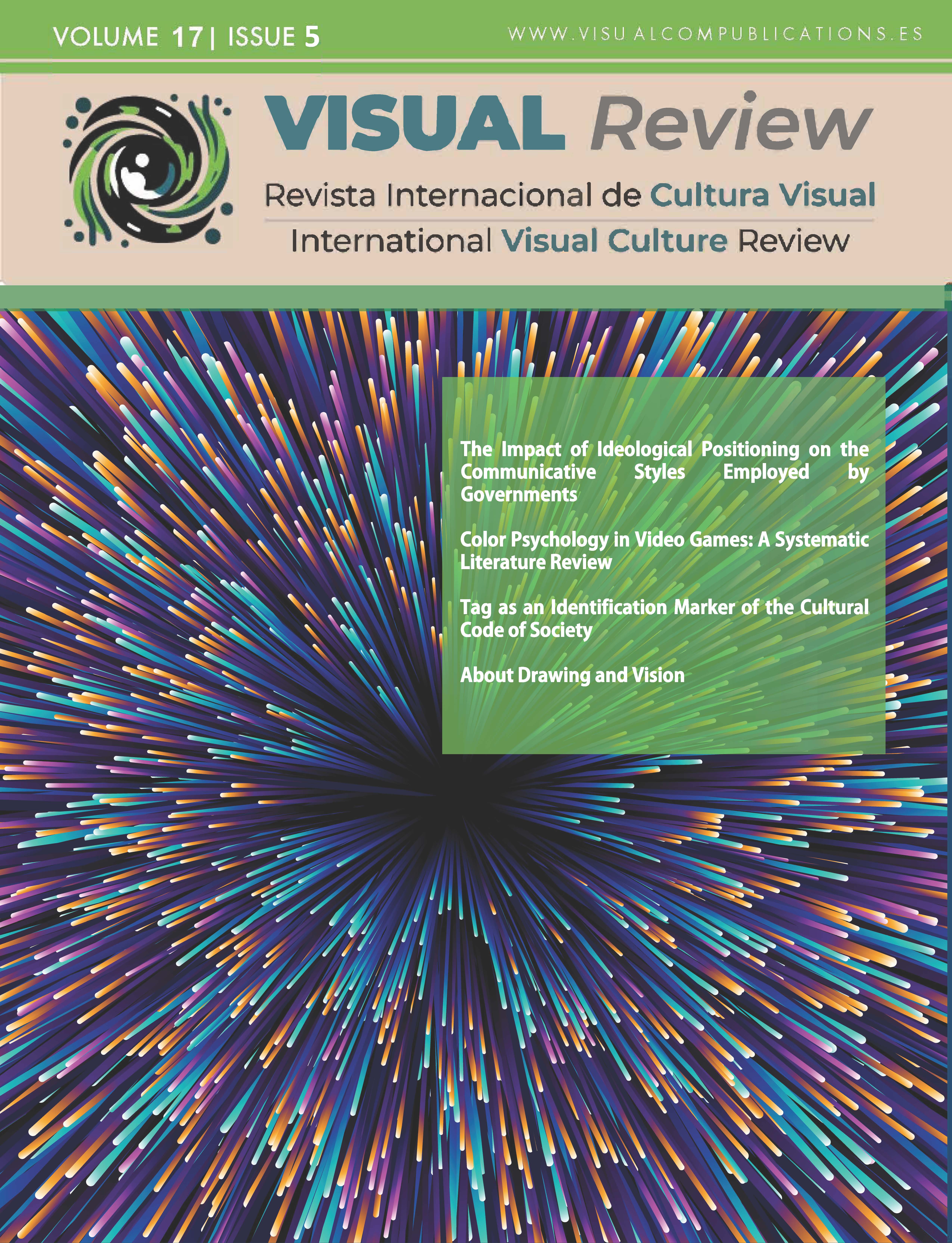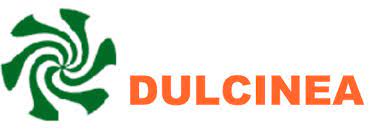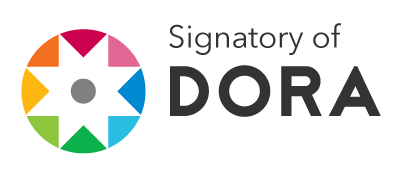Optimización de Campañas para Redes Sociales
Aplicación de CRO en Publicidad Digital
DOI:
https://doi.org/10.62161/revvisual.v17.5855Palabras clave:
Optimización de la conversación, Publicidad digital, Redes sociales, Análisis de competencia, Estrategia visual, Comportamiento del usuario, Comunicación de modaResumen
Este estudio analiza la aplicación de técnicas de optimización de la conversión (CRO) en campañas publicitarias en redes sociales, explorando cómo la alineación visual con marcas competidoras influye en la interacción del usuario. A través de un estudio de caso en el sector calzado, se evaluaron anuncios en Meta Ads y se identificaron patrones visuales predominantes. Los hallazgos sugieren que la coherencia con las tendencias del sector puede reducir la fricción en la conversión, optimizando la efectividad publicitaria. Este enfoque refuerza la necesidad de integrar estrategias CRO desde la captación del usuario, mejorando su experiencia y aumentando el rendimiento comercial.
Descargas
Estadísticas globales ℹ️
|
293
Visualizaciones
|
212
Descargas
|
|
505
Total
|
|
Citas
Bargh, J. A., Chen, M., & Burrows, L. (1996). Automaticity of social behavior: Direct effects of trait construct and stereotype activation on action. Journal of personality and social psychology, 71(2), 230. https://doi.org/10.1037/0022-3514.71.2.230 DOI: https://doi.org/10.1037//0022-3514.71.2.230
Belanche, D., Cenjor, I., & Pérez-Rueda, A. (2019). Instagram Stories versus Facebook Wall: an advertising effectiveness analysis. Spanish Journal of Marketing-ESIC, 23(1), 69-94. https://doi.org/10.1108/SJME-09-2018-0042 DOI: https://doi.org/10.1108/SJME-09-2018-0042
Brinck, T., Gergle, D., y Wood, S. D. (2001). Usability for the web: Designing web sites that work. Elsevier. DOI: https://doi.org/10.1016/B978-155860658-6/50010-9
Chaffey, D., y Smith, P. R. (2013). eMarketing eXcellence: Planning and optimizing your digital marketing. Routledge. DOI: https://doi.org/10.4324/9780203082812
Clifton, B. (2012). Advanced web metrics with Google Analytics. John Wiley & Sons.
Dean, B. (2023, 1 febrero). Conversion Rate Optimization: The Definitive Guide. Backlinko. https://backlinko.com/conversion-rate-optimization
Eckles, D., Gordon, B. R., & Johnson, G. A. (2018). Field studies of psychologically targeted ads face threats to internal validity. Proceedings of the National Academy of Sciences, 115(23), E5254-E5255. https://doi.org/10.1073/pnas.1805363115 DOI: https://doi.org/10.1073/pnas.1805363115
Eroglu, S. A., Machleit, K. A., y Davis, L. M. (2001). Atmospheric qualities of online retailing: A conceptual model and implications. Journal of Business research, 54(2), 177-184. https://doi.org/10.1016/S0148-2963(99)00087-9 DOI: https://doi.org/10.1016/S0148-2963(99)00087-9
Escalas, J. E., y Bettman, J. R. (2005). Self-construal, reference groups, and brand meaning. Journal of consumer research, 32(3), 378-389. https://doi.org/10.1086/497549 DOI: https://doi.org/10.1086/497549
Essig, C. (2022, 20 diciembre). Brand Strategy vs. Marketing Strategy (And How they Work Together). CXL. https://cxl.com/blog/brand-strategy-vs-marketing-strategy/
Faisal, M., Naseer, M., & Akram, G. (2023). Social Media Optimization through A/B Testing for Brand Awareness: A Reach Analysis of A/B Creatives. Online Media and Society, 4(2), 89-100. DOI: 10.71016/oms/j0ercq24 DOI: https://doi.org/10.71016/oms/j0ercq24
Gómez-Zorrilla, J., y De La Espada, J. (2020). CRO. Convierte las visitas web en ingresos. Editorial Almuzara.
Gordon, B. R., Zettelmeyer, F., Bhargava, N., & Chapsky, D. (2019). A comparison of approaches to advertising measurement: Evidence from big field experiments at Facebook. Marketing Science, 38(2), 193-225. https://doi.org/10.1287/mksc.2018.1135 DOI: https://doi.org/10.1287/mksc.2018.1135
Gudigantala, N., Bicen, P., & Eom, M. (2016). An examination of antecedents of conversion rates of e-commerce retailers. Management Research Review, 39(1), 82-114. https://doi.org/10.1108/MRR-05-2014-0112 DOI: https://doi.org/10.1108/MRR-05-2014-0112
Hancock, G. (2023, 5 julio). The definitive guide to Google Analytics 4: What you should know. CXL. https://cxl.com/blog/google-analytics-4/
Hancock, G. (2023, junio 20). Brand awareness: How to claim that top-of-mind position. CXL. https://cxl.com/blog/brand-awareness-marketing/
Hardwick, J. (2019, 18 junio). Cómo hacer un análisis SEO de tu competencia [incluye plantilla]. Blog de SEO de Ahrefs. https://ahrefs.com/blog/es/analisis-competencia/
Harris, J. (1998). Virtual architecture: Designing and directing curriculum-based telecomputing.
Hay, L. (2017). Researching UX: Analytics: Understanding Is the Heart of Great UX. SitePoint Pty Ltd.
Hermayanto, R. (2023). Effective marketing strategies in business: trends and best practices in the digital age. Jurnal Administrare: Jurnal Pemikiran Ilmiah Dan Pendidikan Administrasi Perkantoran, 10(1), 61-72. DOI: 10.26858/ja.v10i1.45101 DOI: https://doi.org/10.26858/ja.v10i1.45101
Kaushik, A. (2009). Web analytics 2.0: The art of online accountability and science of customer centricity. John Wiley & Sons.
Kim, M., y Lennon, S. J. (2000). Television shopping for apparel in the United States: Effects of perceived amount of information on perceived risks and purchase intentions. Family and Consumer Sciences Research Journal, 28(3), 301-331. https://doi.org/10.1177/1077727X00283002 DOI: https://doi.org/10.1177/1077727X00283002
Kohavi, R., y Longbotham, R. (2015). Online controlled experiments and A/B tests. Encyclopedia of machine learning and data mining, 1-11. https://doi.org/10.1007/978-1-4899-7502-7_891-2 DOI: https://doi.org/10.1007/978-1-4899-7502-7_891-1
Lachman, S. J., y Bass, A. R. (1985). A direct study of halo effect. The journal of psychology, 119(6), 535-540. https://doi.org/10.1080/00223980.1985.9915460 DOI: https://doi.org/10.1080/00223980.1985.10542924
Laja, P. (2022, diciembre 16). First impressions matter: Why great visual design is essential. CXL. https://cxl.com/blog/first-impressions-matter-the-importance-of-great-visual-design/
Lindgaard, G., Dudek, C., Sen, D., Sumegi, L., y Noonan, P. (2011). An exploration of relations between visual appeal, trustworthiness and perceived usability of homepages. ACM Transactions on Computer-Human Interaction (TOCHI), 18(1), 1-30. https://doi.org/10.1145/1959022.1959023 DOI: https://doi.org/10.1145/1959022.1959023
Nakatani, K., & Chuang, T. T. (2011). A web analytics tool selection method: an analytical hierarchy process approach. Internet Research, 21(2), 171-186. https://doi.org/10.1108/10662241111123757 DOI: https://doi.org/10.1108/10662241111123757
Nordhoff, S., de Winter, J., Madigan, R., Merat, N., van Arem, B., y Happee, R. (2018). User acceptance of automated shuttles in Berlin-Schöneberg: A questionnaire study. Transportation Research Part F: Traffic Psychology and Behaviour, 58, 843-854. https://doi.org/10.1016/j.trf.2018.06.024 DOI: https://doi.org/10.1016/j.trf.2018.06.024
Orazi, D. C., & Johnston, A. C. (2020). Running field experiments using Facebook split test. Journal of Business Research, 118, 189-198. https://doi.org/10.1016/j.jbusres.2020.06.053 DOI: https://doi.org/10.1016/j.jbusres.2020.06.053
Osterwalder, A., y Pigneur, Y. (2010). Business model generation: a handbook for visionaries, game changers, and challengers (Vol. 1). John Wiley & Sons.
Pakkala, H., Presser, K., & Christensen, T. (2012). Using Google Analytics to measure visitor statistics: The case of food composition websites. International Journal of Information Management, 32(6), 504-512. https://doi.org/10.1016/j.ijinfomgt.2012.04.008 DOI: https://doi.org/10.1016/j.ijinfomgt.2012.04.008
Rennie, S., Buchbinder, M., Juengst, E., Brinkley-Rubinstein, L., Blue, C., y Rosen, D. L. (2020). Scraping the web for public health gains: Ethical considerations from a ‘big data’research project on HIV and incarceration. Public Health Ethics, 13(1), 111-121. https://doi.org/10.1093/phe/phaa006 DOI: https://doi.org/10.1093/phe/phaa006
Shneiderman, B., Byrd, D., y Croft, W. B. (1998). Sorting out searching: A user-interface framework for text searches. Communications of the ACM, 41(4), 95-98. DOI: https://doi.org/10.1145/273035.273069
Simioni, A. (2019). Testing clarity and performance of two landing pages: the impact of people's emotions and perceptions on conversions and pages' performance.
Singh, V., Nanavati, B., Kar, A. K., & Gupta, A. (2023). How to maximize clicks for display advertisement in digital marketing? A reinforcement learning approach. Information Systems Frontiers, 25(4), 1621-1638. https://doi.org/10.1007/s10796-022-10314-0 DOI: https://doi.org/10.1007/s10796-022-10314-0
Siqueira, J. G., y de Paula, M. M. (2018, June). IPead A/B test execution framework. In Proceedings of the XIV Brazilian Symposium on Information Systems (pp. 1-8). https://doi.org/10.1145/3229345.3229360 DOI: https://doi.org/10.1145/3229345.3229360
Siroker, D., & Koomen, P. (2015). A/B testing: The most powerful way to turn clicks into customers. John Wiley & Sons.
Soloaga, P. (2002). Construcción de imagen de marca en Internet. Aplicación de un modelo interactivo. Área abierta, (4).
Song, L., Mo, Z., Liu, J., y Fu, H. (2023). The effect of online shopping channel on consumers’ responses and the moderating role of website familiarity. Electronic Commerce Research, 1-21. https://doi.org/10.1007/s10660-023-09781-7 DOI: https://doi.org/10.1007/s10660-023-09781-7
Srivastava, R. S., y Manohar, A. (2020). Redefining Mobile Marketing through Conversion Rate Optimisation. IBA JoUrNAl of MANAgEMENt & lEADErShIp, 12(1), 19.
Tayar, R. (2018). CRO. Diseño y desarrollo de negocios digitales. Comercial Grupo ANAYA, SA.
Tayar, R. (2019). CRO Profesional. Estrategia y Práctica. Comercial Grupo ANAYA, SA.
Then, N. K., y DeLong, M. R. (1999). Apparel shopping on the web. Journal of Family and Consumer Sciences, 91(3), 65.
Thorndike, E. L. (1920). Intelligence examinations for college entrance. The Journal of Educational Research, 1(5), 329-337. DOI: https://doi.org/10.1080/00220671.1920.10879060
Welling, R., & White, L. (2006). Web site performance measurement: promise and reality. Managing Service Quality: An International Journal, 16(6), 654-670. https://doi.org/10.1108/09604520610711954 DOI: https://doi.org/10.1108/09604520610711954
Yang, S., Lin, S., Carlson, J. R., & Ross Jr, W. T. (2016). Brand engagement on social media: will firms’ social media efforts influence search engine advertising effectiveness?. Journal of Marketing Management, 32(5-6), 526-557. https://doi.org/10.1080/0267257X.2016.1143863 DOI: https://doi.org/10.1080/0267257X.2016.1143863
Zhang, J., Farris, P. W., Irvin, J. W., Kushwaha, T., Steenburgh, T. J., y Weitz, B. A. (2010). Crafting integrated multichannel retailing strategies. Journal of interactive marketing, 24(2), 168-180. https://doi.org/10.1016/j.intmar.2010.02.002 DOI: https://doi.org/10.1016/j.intmar.2010.02.002
Descargas
Publicado
Cómo citar
Número
Sección
Licencia
Derechos de autor 2025 Los autores/as conservan los derechos de autor y ceden a la revista el derecho de la primera publicación y el derecho de edición

Esta obra está bajo una licencia internacional Creative Commons Atribución-SinDerivadas 4.0.
Los autores/as que publiquen en esta revista aceptan las siguientes condiciones:
- Los autores/as conservan los derechos de autor.
- Los autores/as ceden a la revista el derecho de la primera publicación. La revista también posee los derechos de edición.
- Todos los contenidos publicados se regulan mediante una Licencia Atribución/Reconocimiento-SinDerivados 4.0 Internacional. Acceda a la versión informativa y texto legal de la licencia. En virtud de ello, se permite a terceros utilizar lo publicado siempre que mencionen la autoría del trabajo y a la primera publicación en esta revista. Si transforma el material, no podrá distribuir el trabajo modificado.
- Los autores/as pueden realizar otros acuerdos contractuales independientes y adicionales para la distribución no exclusiva de la versión del artículo publicado en esta revista (p. ej., incluirlo en un repositorio institucional o publicarlo en un libro) siempre que indiquen claramente que el trabajo se publicó por primera vez en esta revista.
- Se permite y recomienda a los autores/as a publicar su trabajo en Internet (por ejemplo en páginas institucionales o personales), una vez publicado en la revista y citando a la misma ya que puede conducir a intercambios productivos y a una mayor y más rápida difusión del trabajo publicado (vea The Effect of Open Access).













